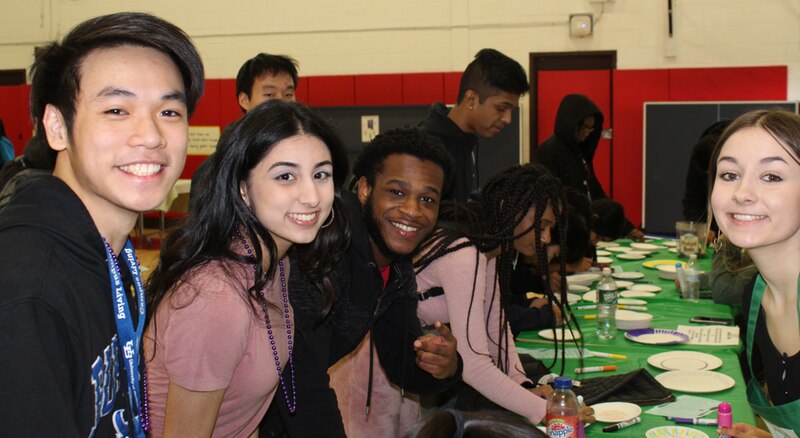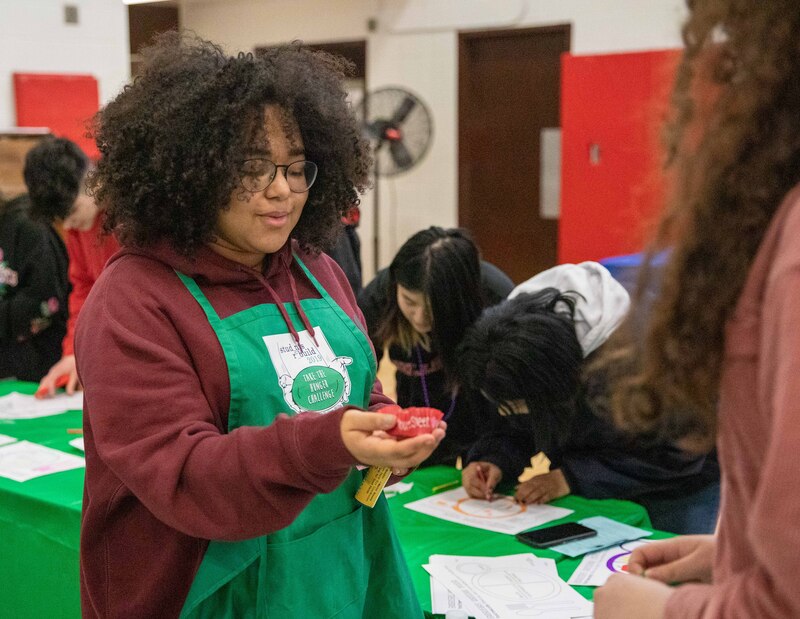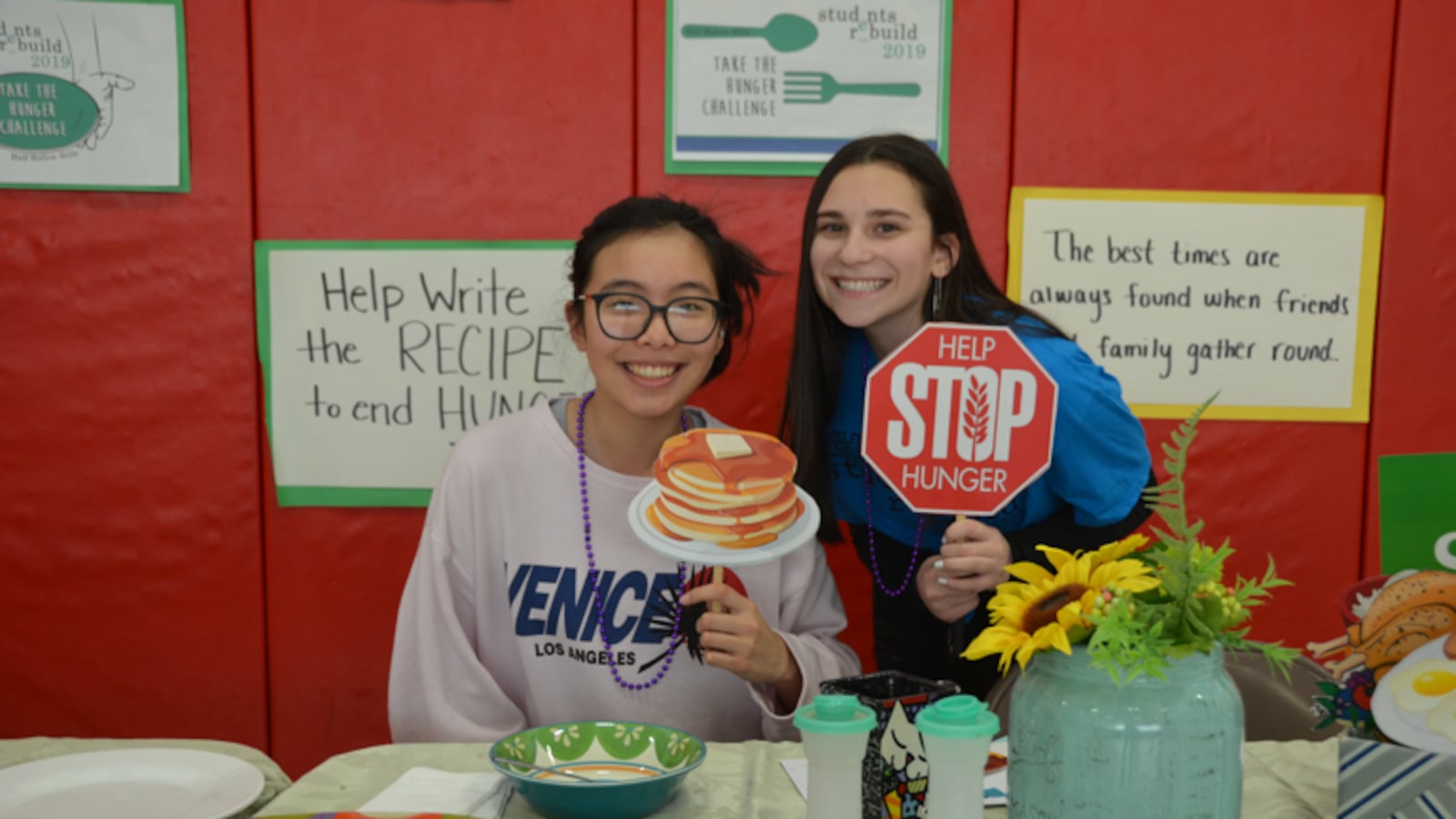Written by Cynthia Cullen
Public schools were originally founded to help create responsible citizens. As an educator, I work to build a culture of caring that starts from the youngest grades and continues to the oldest. It isn’t enough to teach students the curriculum of any particular subject: Educators also have a key role in modeling how students can care about each other, care about their local community, and care about our world at large.
Like many American school districts, mine on Long Island offers students a range of extracurricular activities. I’ve often taught that students should give back to their communities, and it’s common that students raise money for a cause in the extracurricular clubs they belong to. But instead of magazine subscriptions or other fundraisers that ask students to sell a product, I was looking for fresh ways to engage young people on causes that matter, and found that with intentionality, educators can layer service learning throughout a school — or even district wide.
Scaling up service learning can connect students at every grade level and offer an opportunity to delve into relevant issues facing our global community. To begin, we encourage students to find a cause that resonates with them, whether it be hunger, the environment, how people are unfairly treated, or global refugee crises. Establishing a service-learning culture that connects students across grades and on global issues is possible with the support of programs like Youth Service America, Do Something, and Seattle-based Students Rebuild.

Thinking globally
To get my students thinking about service-learning, I tell my students to find at least that one thing that really makes them angry, and then do something about it. This year’s Students Rebuild World Needs Challenge highlights a range of topics that can inspire students not only to care about a global issue but to act on it.
Students Rebuild begins by encouraging young people to learn about their topic first, and then use creative expression to show their understanding of the need. They submit pieces of art, which translates into money, which then gets distributed to actual groups making actual change. Students Rebuild inspires students to do something meaningful with a global focus — without having to ask for funds through sales.
For example, in 2012, we held an event in the cafeteria for students to make papier mâché bones for the One Million Bones project, which raises awareness about humanitarian crises and supports the nonprofit CARE, whose mission is to “save lives, defeat poverty, achieve social justice, and fight for women and girls.” Through this project, 1 million handmade bones were displayed across the National Mall as a visible petition against humanitarian crises. Making the art was messy and chaotic, but our students embraced the creative method of helping others, and their efforts contributed to a donation of $500,000 to CARE’s work in Somalia and the Democratic Republic of Congo.
Students teaching students
Beginning in 2015, I worked with staff to explore an in-service learning opportunity to engage all of the students in our schools from kindergarten through grade 12. The enrollment in our district at the time was 8,000, so it was quite the challenge to envision and organize but well worth it. I wanted to show students that there are many ways to make a difference in their communities — locally, nationally, and globally. Since then, the Students Rebuild Challenge has turned into an annual event in my district. Over the years, we have consistently submitted 25,000 to 35,000 pieces of art, often valued at $120,000 to $160,000 in matching donations.
We train our high school students to work with elementary classrooms to present a lesson on the topic at the heart of the challenge. In the many conversations I have had with students who have participated in leading these teach-ins at the elementary level, they have been excited to go into classrooms where the younger students marvel at older students. There seems to be a special sense of awe because here is another “student” and not an adult. I remember being an elementary student and the few times “older kids” came into our classrooms to help us or lead us in something, the younger me could see the possibilities of an older me.

Adapting to COVID
The isolation we’ve experienced from the global pandemic has been profound. But it has only reinforced the importance of service learning. Although we have fewer community “service learning” opportunities in person, the problems of the world have not magically disappeared.
Students need to feel connected more than ever, and students understand that they are not powerless — they can make a difference in the lives of others regardless of their age or their socioeconomic status.
Students Rebuild’s service-learning opportunities can be shaped in different ways to accommodate challenges. In my school district, we decided to try implementing a full digital strategy for a Students Rebuild service-learning project on Changemakers. We used digital platforms to engage with the thespian club to read a series of children’s books that illustrated examples of changemakers. The high school students did a fantastic job and enjoyed reading the books aloud, and the elementary students liked the idea that older students created the videos just for them.
That caring that we try to foster through Students Rebuild can translate to a sense of civic responsibility that will carry over into adulthood. That level of lasting engagement is one of my greatest hopes for students. Whether in person or online, service-learning is an opportunity to show students that there are many opportunities to do seemingly small things that ultimately have a huge impact.
Cynthia Cullen is an educator at Half Hollow Hills High School East in Dix Hills, New York.
Chalkbeat’s editorial staff had no role in writing or preparing this paid content. Learn about our sponsored content policy.


